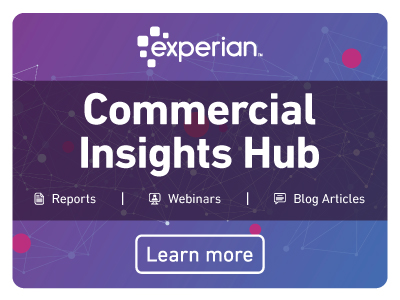Industries
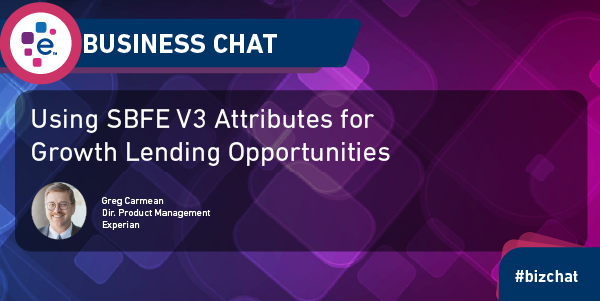
In our Business Chat, Greg Carmean shares how the latest SBFE attributes help lenders better assess small business risk and tap into growth opportunities.
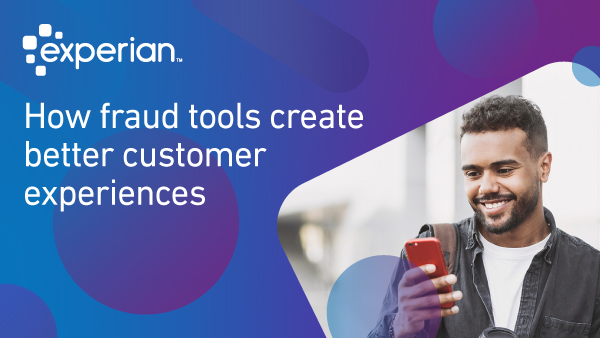
As the economy continues to recover, commercial service providers have a significant opportunity to expand their market share by growing their business and commercial portfolios through new customer acquisition. Compared to consumer relationships, which typically carry a more limited number of accounts, business customers offer the opportunity for a more expansive relationship, with the ability to onboard the customer into multiple accounts and products. A relationship with a business customer may start with a single checking account, and if the customer is pleased with the service and experience, that relationship may blossom with the customer’s adoption of additional products and services including telephone lines and devices, business credit cards, loans and lines of credit for business needs, software, and treasury management products, among many others. To gain more share of the wallet, commercial service providers must offer an excellent digital customer experience as the cornerstone of a successful customer relationship, as the market becomes more and more competitive. Business customers are quickly transitioning their operational processes to be digital-first, and they expect vendors and suppliers, across many industries especially financial institutions, to be a step ahead in offering digital account opening and support. How fraud tools help the customer experience Commercial service providers must continuously innovate their operations and account onboarding strategy to stay competitive and shut out cybercriminals. A robust fraud prevention strategy should help to reduce losses and operational costs. By prioritizing fraud tools that enable automation, commercial service providers can reduce costs by eliminating labor-intensive processes. The challenge for service providers becomes how to effectively manage that trade-off: creating a technology-enabled process that accurately disrupts fraud attempts while not inconveniencing and adding undue friction to legitimate customers. For example, fraud tools that activate during the onboarding phase can help service providers offer a better customer experience, allowing low-risk accounts to pass through with minimal friction while applying safeguards to slow down applicants in the danger zone for further review. Many commercial service providers are unaware of the amount of undiscovered fraud that lies within their customer portfolio. Undiscovered fraud is a subset of your approved customers who represent a risk of future fraud. These cases exist because many legacy fraud tools take a one-size-fits-all approach to screening for fraud. But these customers are at a higher risk for future fraud occurrence. Now, advanced fraud prevention improves the experience for the majority of customers by enabling a less intrusive application process, reducing friction within the customer experience, and increasing operational efficiency. Preventing fraud with an integrated framework of tools There are three major types of application fraud: First-Party Fraud —the perpetrator opens an account without an intent to repay the creditorThird-Party Fraud — the perpetrator opens an account under someone else’s identitySynthetic Fraud — the perpetrator uses stolen information and creates a fictitious identity with pieces of real information, in order to carry out fraud. Tailoring your approach to specific fraud makes for a better customer experience and bottom-line savings. However, identifying and remediating all types of fraud requires a cascade of tools, experts, and data sources. Experian’s commercial fraud suite can be customized within a commercial service provider’s operational workflows to address each form of fraud with the correct treatment. Experian’s tools are supported by the most robust consumer and business data available, in addition to new, third-party sources, giving commercial service providers the ability to gain efficiency through a single partnership, as opposed to manually integrating data from multiple disparate tools and sources. One way we have created efficiencies for commercial service providers is by blending consumer and business data through our next-generation business verification solution Multipoint Verification. It helps clients cross-reference application information with robust databases backed by blended bureau data and new, third-party data sources. With Multipoint Verification, commercial service providers can leverage practical intelligence gathered from signals that describe the validity of attributes like the applicant’s phone number, professional social media profiles, historical employment information; and business information like a business’ web domain, email addresses, mailing address, industry classification, corporate linkage, Tax ID, and much more. Once the business owners have been verified, providers can score their applicants with Experian’s First Party Fraud Score, a new-generation blended predictive scoring model designed to identify first-party fraud risk or the likelihood of a first payment default within the first 6 months of account opening and to identify credit bust-out scenarios. Growing business customer bases with fraud prevention tools Customer expectations of online applications have changed in recent years, and your lower-risk good customers can enjoy that lower friction experience while higher-risk applications get more scrutiny. Focusing on the customer experience in how you screen for fraud can be a great growth opportunity. By using a comprehensive suite of tools such as Experian’s Commercial Entity Fraud Solutions, which specifically addresses each fraud type and applies the right type of friction when needed, your firm can drive operational efficiency that reduces risk and cost. Learn more about Multipoint Verification
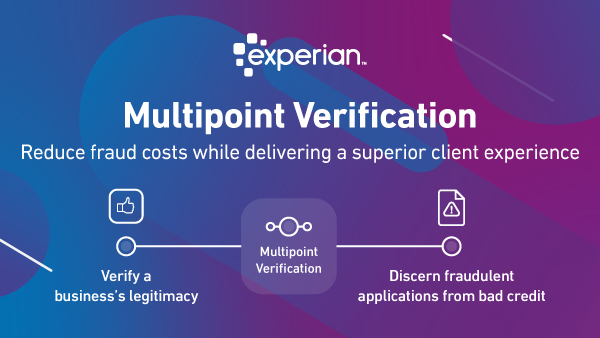
Experian is very excited to unleash game-changing commercial fraud detection capabilities with Multipoint Verification, a key component in our commercial fraud suite. Innovations in digital consumer experiences mean your commercial customers have new expectations. They want personalized, digital, secure faceless experiences, and fast decisions. But faster digital experiences without proper checks can often open the door to commercial fraud. Manual application reviews can slow things down, and cut into your bottom line. Experian can help you control costs and protect you from the high price of commercial fraud, and labor-intensive manual review processes. Multipoint Verification facilitates fraud detection at the point of application, so your lower-risk good customers can continue to enjoy a frictionless experience while you mitigate fraudulent applications. Introducing Experian Multipoint Verification Multipoint Verification helps you verify a business's legitimacy. In addition, it enables you to discern fraudulent applications from bad credit through comprehensive data sets. Single-sourced verification products can be limited in their capability and often prone to false positives. Multipoint Verification arms you with practical intelligence, so you can confirm the linkage between the applicant and claimed business, state filings, email issuance, or identify potential corporate linkage to other entities at the point of application. Experian is transforming the commercial fraud screening landscape, let’s start a conversation. Learn more about Experian Multipoint Verification

Employees of a business susceptible to phishing attacks can also impact risk profile of their employer.
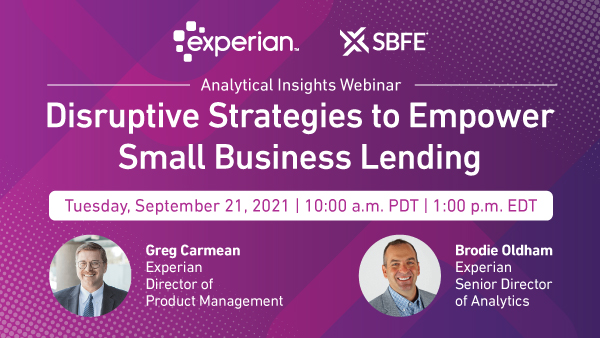
Gain the ability to identify the most stable and profitable small business clients Join our webinar, in partnership with the Small Business Financial Exchange (SBFE): Disruptive Strategies to Empower Small Business Lending Tuesday, September 21, 2021, 10:00 a.m. PDT | 1:00 p.m. EDT Learn how to target small business growth opportunities and enhance the customer experience through automated credit-risk decisioning, with special focus on: Advanced methodologies for developing and leveraging new data attributes Advantages to having explainable, machine-learned models Effortless data visualization to conceptualize growth opportunities Ability to target populations and product mix for financial inclusion Register for Webinar
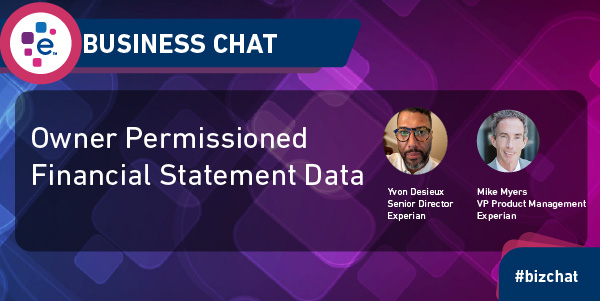
Subscribe To Our YouTube Channel [Gary]: I'm joined by Yvon Desieux, a Senior Director in our product team, and Yvon is responsible for product strategy and driving innovation in lending through the creation of products and applications for commercial lenders. Sitting next to Yvon is Mike Myers, our Vice President of Product Management here in Business Information, and he leads the product team and AgileWorks Innovation Lab. Welcome to Business Chat, gentlemen. The COVID-19 pandemic spurred a wave of innovation in e-commerce, in restaurant delivery services, in FinTech, digital has raised the stakes. There's an expectation with consumers and businesses that client experiences should be on an even playing field across industries. But when it comes to applying for loans, particularly on the commercial side, those processes can be quite manual. One of the things that speed things along is real-time, financial statement data. What is real-time financial statement data? [Yvon]: Well, simply, financial statement data in real-time is just when lenders are able to access accounting software via the Internet, to power their lending decisions, and our new product offering Experian Datashare, provides this capability with the power of owner permission data. With this permissioning, small business owners are empowered with the ability to leverage their own financial data, to apply for the loans and other services that they need. So, unlike a credit report, permissioning puts the owner in control of what transactional data they share, to qualify for the loans and lines of credit that they need to keep their businesses running. So this consented data provides personalization balanced with privacy for businesses and growth, balanced with accountability for the lenders. What problem is real-time financial statement data solving for lenders? [Yvon]: The feedback that we've received falls into four-tier categories. It's revenue growth creating operational efficiencies, decreasing risk, and creating a better client experience through a modern digital journey that's easy to understand and delivers faster decisions and quicker access to the financing that the small businesses need. Mike, when you talk to clients about digital transformation, what are the things that are keeping them up at night? What are they most concerned with? [Mike]: I think all of our clients, to some degree, are going through a technical transformation, or we often call a path to modernization, and Experian is in the same boat. You know, it's hard to stay on top of technology and really leverage the cloud and be able to get new products, new services, new capabilities to market quickly. Some of the biggest challenges our clients expressed to us are how do we operate in what's become a very different environment over the last year, year, and a half with COVID. Things have moved at a much more rapid pace, as far as digitization. So the interactions with their clients have changed. It's become a bit more impersonal. It's become a bit more quick and with a sense of urgency, and many clients are struggling to do everything online and do it at a breakneck speed. This is often where API's and with different technologies, we can keep pace and help our clients integrate data, access data, and ultimately render decisions to their end-users in a much quicker and more time-efficient way. Can you talk a little bit about Experian's API Hub and getting access to our data? [Mike]: The API economy has been here for many years, and our clients are integrating our data and, you know, putting it into their systems so their users can access data real-time. And Datashare is one of those services where this data can be integrated into our client's systems. And there's no drop-off, there's no manual, or swivel chair type activity where you're going to multiple systems. It becomes a much more efficient process. And not only the client wins, but also an applicant gets a much more rapid decision and can go ahead and power their business. Can financial statement data play a role in helping emerging and underserved businesses grow? If so, how? [Yvon]: Yeah, for new and small businesses that haven't yet established business credit and rely on the owner's personal credit profile for lending decisions, Datashare gives them the ability to share their financial statements and show the financial health of the business. This expanded data can be used, in the decision-making process in addition to the standard bureau data to create more approvals. By permissioning data, these businesses are able to move out of an unscorable or subprime, hard money loan bracket, into a space that helps them qualify for more traditional loans and lines of credit, with better rates in terms. [Gary]: Mike, I've got another slide here; businesses of color, have been severely impacted by COVID. You can see some of these stats here. 30% of black business owners say that access to credit is the biggest challenge in the next 12 months. 47% said they didn't apply for financing because they did not think they would be approved, only 37% received all of the financing they sought. Recently on a CBA webinar with a Experian, Janelle Williams from the Atlanta Fed was saying that 83% of the PPP loans went to white-owned businesses, but only 1.9% went to businesses of color. How can Experian DataShare help underserved businesses of color? [Mike]: Yeah, Gary, you're really touching on a key point here. You know, small businesses, power our economy. They make up the majority of businesses out there. And based on that recent stat you and Yvon just discussed about new business startups. There's more than ever, and we all have to do a better job of making sure there's an equal playing field when it comes to accessing capital, whether it's trade credit or financial packages, to help them manage their cash flow. And that became more evident than ever again, with the pandemic and the sudden shift in the economy. It became more and more challenging for many small businesses to manage their cash flow, pay their employees, and really see a path forward. So data share is exciting in a number of ways. What excites me is that it now combines a historical process that was done in a much more offline manual way. And now can be done in real-time. And if you start combining that with historical payment information, historical public record filings, in addition to real-time financials, you have a winning combination that can provide a clear view of a small business's financial status and real-time view. So not only the historical, which is a great way to predict future payment behavior, but also the most current accounts receivable accounts payable information that can really help you understand what their future holds. How can DataShare deepen the relationships between lenders and the small businesses that they serve? [Yvon]: Datashare drives operational efficiency. So, it allows the lenders to receive the financial statement data in a standardized format. This is regardless of the size of the business or the source of the accounting data. It drastically reduces the level of manual effort required to underwrite a loan. And it automates much of the time spent on the administrative tasks associated with the lending process. So this means that relationship managers and underwriters and credit teams are going to spend less time creating reports and gathering documents and chasing clients. And they're going to be able to spend more time holding, we hope, value-driven conversations to deepen the relationships they have with their clients and help those businesses grow and expand in line with their needs. [Gary]: So those small businesses are going to experience greater efficiency, ease of doing business with their lender. The lender has more time to devote and work more closely with those clients, but also maybe the underserved businesses, the unscored businesses, they have that additional insight to see really how that business is doing and how they can grow that relationship with them. Am I right? [Yvon]: Yeah, absolutely. Time is the big commodity, and speed kills. So what Datashare allows lenders to do is negate all of the wasted time and effort spent onboarding and processing clients. And they can dig into that live transactional data, and get to understand the business, and perhaps share insights with the business owners that even the owners don't know. So, it allows both sides to work more efficiently and more profitably. [Gary]: Are you seeing a change in perception on the part of the business owners of today? I mean, a lot of the Millennial business owners they're used to mobile technology, they're used to delivery services on-demand services. Do you see a change in perception in permissioning, access to financial statement data? [Yvon]: Yeah, actually, we have. We typically see adoption rates as high as 90% when it comes to small businesses that are actively looking for financing. So these are motivated clients who typically go with a lender that can provide the quickest time to cash, and Datashare typically cuts down that time to about 65%. We live in a rapidly developing world where digital adoption is at an all-time high, and the same is true for small businesses. As we shift from the stacks of paper and filing cabinets, both lenders and borrowers see the benefits of leveraging technology to make their organizations more efficient and profitable. The annual review process is one pain point that we've heard a lot from clients. Is this something that could help clients minimize some of that pressure, that's a real stressor on bandwidth? [Yvon]: Yeah, absolutely. Datashare automates the monthly, quarterly, or annual review process. So when a small business permissions their data, lenders are able to choose the data refresh frequency, that is also permissioned. So, combined with covenant monitoring Datashare is able to flag accounts that fall out of an agreed risk threshold, which saves the credit team valuable time having to review their entire book of business and allows them to strategically focus on problem accounts and mitigate risk before it gets out of hand. [Gary]: So, any further thoughts on how Experian DataShare can help lenders or the small businesses they serve? [Yvon]: Yeah. Our focus will continue to be on finding ways to automate processes and provide insights into the financial statement data that we acquire. We'll continue to receive feedback from the clients that we've partnered with and integrate that into our roadmap to create new products and services that will benefit both lenders and the borrowers that they serve. [Mike]: Yeah. I would add Gary that we're at a really interesting time. You know, there's the speed and the in-depth view of a small business's financials at our client's fingertips that can help equal that playing field and open up financial opportunities for businesses of all shapes, sizes, and colors, and Experian Datashare helps with that. Combine that with our historical trade and public record data, and you've got a winning solution for both our clients who are offering the financial vehicles, as well as the applicants, the small businesses out there that need help. And that historically may have been on the outside looking in. Now they have an opportunity to share their financial situation, a picture that can help them move their business forward and access capital when they most need it. [Gary]: Well, this has been super informative, guys. I want to thank you for taking the time to come on Business Chat. And if you would like to learn more about how real-time financial statement data can help small businesses, Experian recently published a free ebook perspective paper. We'll provide a link and a QR code for you to download. If you have any questions, of course, feel free to reach out to your Experian account representative to get a conversation started about helping small businesses grow through innovative solutions like Experian DataShare. Thank you very much, gentlemen. Download Perspective Paper Learn more about alternative data

In the wake of the Coronavirus Pandemic, thousands of companies were forced to go digital, transforming brick and mortar experiences to mobile-enabled, touchless digital experiences. Whether you were a small grocery chain or a family restaurant getting plugged into a myriad of takeout ordering platforms, the choice was simple, upgrade to a fully digital experience or go extinct. When the $2.2 trillion CARES act passed in March of 2020, and with it the $350 billion Paycheck Protection Program, many banks had to work quickly to transform their SMB lending process to be more data-driven, risk-proof, scalable, and ready to deploy in a matter of weeks, rather than months. The Unqork no-code solution offers a flexible alternative. There’s a new breed of solutions that make it possible for banks to build robust, mission-critical applications without using a single line of code. Unqork is the leading no-code enterprise application development platform. With Unqork, you can manage no-code application development throughout the entire Software Development Lifecycle without having to implement traditional coding efforts, so you can move faster at a lower cost with fewer errors to future-proof your business. The Unqork platform makes it easy to power applications with Experian data using API’s. You can build powerful digital experiences without the scripting and coding you would normally expect. Curious? Watch our recent Business Chat interview with Unqork below. Digital Transformation with No-Code & API's | Business Chat Interview Transcription We interviewed Ben Smith, Head of Banking with Unqork and Carl Stronach, Senior Product Manager with Experian met during a recent Business Chat about No-Code for Enterprise Financial Services. What follows is a lightly edited transcription of their talk. [Gary]: Hello and welcome to Business Chat. So happy you could join us today. I'm Gary Stockton with Experian; I'm with Business Information Services here in North America. We would love to know where you're joining us from. We're streaming here from Costa Mesa, California; we're live on LinkedIn and other channels via Restream. Be sure to drop us a comment and hashtag #teamlive if you're watching us live, hashtag #teamreplay, if you're catching this on the replay, and remember sharing, is caring. We would love it if you can share this chat. If you could let your colleagues know that we're talking about APIs and No-Code by sharing this live stream, that would help us expand our audience. So they were going to be talking about no-code technology and Experian API's with two great experts. Joining us from Unqork is Ben Smith. He's the head of banking, and from Experian is Carl Stronach. He's a Senior Product Manager here at Experian, and he works on API's. Welcome gentlemen. Ben, if you could take a moment, please tell us a bit about Unqork and your mission, where you're based, and how you got started. [Ben]: So we were founded in 2017 by Gary Hoberman. Gary was the CIO of MetLife, and Gary had a mission to redefine software development and focus on delivering software at the enterprise-grade faster with a lower total cost of ownership and something that could be delivered by a number of different people, not necessarily people who had a significant development talent and experience. So Gary set out in 2017 to redefine how we do it. We are a no-code platform. We are totally cloud-based and agnostic. We are deployed in over ten countries with over 70 different clients. And the other thing, part of the mission that we have here around the development is we've trained over 10,000 experts globally who can develop on the platform because we believe that the no-code environment allows for rapid adoption, and we want that adoption to be significant. [Ben]: So, what it says here is we have three major investors; we have a number of other ones. Obviously, BlackRock, Google, and Goldman Sachs are all major investors. And then, as I alluded to earlier, the mission of the firm is to develop enterprise-grade no-code solutions. So you can see at the bottom of this slide some of our major customers as well. [Gary]: Carl, could you share a little bit about your role here at Experian you've been at Experian quite a while, and how you work with companies like Unqork? [Carl]: So I've been with Experian for almost seven years, I'm focused on new product development. For the last four years, I have been focused on our APIs and bringing Experian business information into our global developer portal. In that time I've worked with a countless number of banks and FI's, and many of our clients across our verticals in their integration with Experian. In terms of how they are going to get our data in the most efficient way. I've supported a lot of them from the business side and the IT side and kind of sat in on both. And I've seen many of our clients really succeed with their integrations with us. That's just a direct integration to our rest API, and others, you know, take a long time. [Carl]: So I'm sensitive to the fact that coding to APIs as easy as we can try to make them with a rest API, and as easy as we can try to make them by adding SDKs or, or other supporting information on top, it's still difficult and time-consuming. A lot of the time to code to APIs certainly gets much more complex as we get into regulated data. So it's definitely something that we want to narrow the timeline strategically. How do we get access to data and query it faster than ever before? Strategically it's something we're interested in and excited to be a part of, and working with providers like Unqork allows us to unlock some of those technologies. [Gary]: So Ben, what's the distinction between low-code and no-code, and what drives the adoption of no-code technology? [Ben]: The main difference is that everything that we develop on Unqork does not have any native code to it. So for you, as a developer, it's a complete visual system. And the most important thing is there's no need to maintain the code once you've written it. So even in low code environments, there is, of course, the upkeep of the code, and ultimately it becomes legacy. Whereas in our system, all of our customers are on the same platform using the same environment, or sorry, using the same software to develop their solutions. And they're always up to date. That's a big difference, there's no need to develop that last bit, and there's no need to maintain it once it's out because as soon as you write a bit of code, you've got to maintain that code going forward. [Ben]: To the second point, how are people adopting it? We see it adopted across a number of use cases. So, for exactly that reason. Many in my world as Head of Banks, many of our customers in the banking sector are looking for ways to develop both customer-facing as well as internal-facing software that digitizes their workflows, whether that be onboarding, operations. It just depends on the needs of that particular bank. But again, the rapid development, the ability to get to market faster and the ability to not have to maintain that codebase once it's up and running have been a really powerful part of our value statement. [Gary]: Carl, switching to data and API's. You work with a lot of clients in the banking industry. Can you tell me where in the customer life cycle does Experian API's fall? [Carl]: It's really across the lifecycle. From campaign targeting and finding new customers to underwriting and account acquisition and customer management, even collections. It's really across the full spectrum. To take a step back. Everyone thinks of Experian as the consumer credit bureau. And, I am a very big fan of John Sina. So I think that's how Experian is generally known. But Experian's business goes well beyond just consumer credit. Obviously, we have business credit, and that's our focus here. But when it comes to our APIs, we bring everything together into a single global developer portal. So, what you can do through a single developer account is an interface with all Experian information, and we source data internally. So we've got our North America Business Information, Consumer Information, Automotive, Data, Quality, Decisioning, you name it, it's all available in one place. Also, we have an International focus too. So if you go there, you'll see API's from the UK, India, Singapore, all across the globe. We really try to be that shop for Experian data, making it much easier to code to us and eliminate those silos that used to exist in our own internal legacy systems. [Carl]: Now, I'm really excited by some of the things that Unqork can do. When we talk about setting up one workflow that can be shared many times and doesn't have to be re-coded over and over and over again, we see the same in working with our customers. When we work with our banking customers, a lot of them execute the same exact workflows to get to Experian data. Maybe the data they need is different. Maybe the data they find predictive is different, but it's really a lot of the same workflows. And so, as we work with Unqork we can define more of these workflows, make them predefined and hopefully just speed time to market. Really eliminate a lot of the burdens with a new integration or basically offer a new product and get it out. [Gary]: So you're finding that customers are applying these new technologies to get to market faster. I have to imagine that that was fairly active during COVID. A lot of people spinning up shopping carts and people that have brick-and-mortar stores had to innovate faster. And would you agree that platforms like Unqork are helping make that possible with API's? [Carl]: Absolutely, so that's even a part of what we're trying to do as well. As small businesses have had to transform due to COVID, they've had to adopt more digital experiences and maybe they had to. It's a restaurant and they had to change their storefront from having tables and chairs to having just a counter and offering delivery, opening up the restaurant to more kitchen space, to handle a greater number of orders coming in. I think we are also trying to capture new data assets that can tap into that business's digital transformation. So, we've done a lot to acquire more online data on businesses, more social media data on businesses, to tap into understanding what that business activity is. Are they open? Are they closed due to COVID? And so, as we start to adopt those new data sources, our clients also face the challenge of discovering them, integrating them into their services. [Gary]: Excellent. So, a two-part question for you Ben. How are banks deploying no code and, and are there any security considerations when using a no-code platform? [Ben]: I think you know what we do here at Unqork for some of our customers, and what Unqork provides is the capability to both design a bank-specific user experience, but in a rapid way to deploy digitally. To solve problems that are rising quickly. PPP is a good example of that and other ones. Going forward, the ability to integrate with places like Experian on different data types such as social and some of the other ones that Carl spoke of. I think will be very important in terms of how banks redefine their small business and business offerings because post-COVID we're all going to be trying to figure out how to serve that segment in a way that makes sense from both a credit and a service point of view. [Gary]: Excellent. So, Carl what challenges are you seeing with lenders adopting and integrating bureau and non-traditional data? I mean, non-traditional is a hot space right now. [Carl]: Yeah. So, I think one of the challenges is just discovering the data and defining it, and being able to start working with it. I think we experienced that, even internally, so there are just so many different data sources out there. How do you really prioritize what to go after? Having it available in a single place is really key. If you had to continually define data and bring it into your database in order to work with it, it just becomes very challenging. We need to find and adopt technologies that take that burden away from our customers. Gary, we can't expect every customer to define the data source. We need to do it for them and technologies like Unqork, give us the ability to do that. And so, I'm excited by that part. If we can lower the burden there, it can unleash data analysts and data scientists to really find out which data might be predictive. So a lot of our customers want to find data that's going to be predictive of credit risk, predictive of delinquency. We need to find ways that allow them to really focus their time on finding the data, what data is actually going to be predictive. I don't want to spend all my time just defining the data just so I can test the top, a couple of fields that I have a hunch on. I want to go deeper and really find that marginal value. And technology is the key enabler that lets us do that. So go into the data. [Gary]: Thank you, Carl. So, Ben, based on what we just heard from Carl, can you share some examples of how SMB lenders can fast-track lending applications? [Ben]: Sure. We're working with banks around both customer onboarding and also around, the product development, into the origination cycle. I think what Carl's saying is right. To the extent that we can discover this data and get it at a deeper level, get it into the risk modeling infrastructure, through the integrations that we, as a platform can build, allows for more rapid adoption of alternative data sources. But also, better credit decisioning, you know, particularly as I sort of feel passionately about a post-COVID world and the need to take a different view as to how that credit risk moves or how credit risk is assessed. [Gary]: Well this has been very interesting guys. And folks, if you would like to learn more about no-code and how to fast track applications and integrate with Experian API's, Unqork is hosting a webinar March 24th at 12 Eastern. Experian is going to be participating in that, we're very excited to participate. If you would like to register, you can just point your phone at the QR code or go to the link that we have there. We'll leave that in the description for this video, if you want to come back to this later. And, by all means, if you have any questions drop them in the comments. We'll be monitoring the comments in the next few days and replying to those. I want to thank both of you guys for taking time out today. I know you're both extremely busy, and looking forward to chatting with you again soon and looking forward to the webinar on the 24th. Watch Webinar Unqork + Experian: Smarter Small Business Lending

The concept of machine learning has been around for 50+ years in analytic circles. But machine learning methods have created a stir in the last few years as their popularity and visibility increased in the U.S. consumer and commercial credit industry. The use of these advanced methodologies has been constrained to mainly fraud/identity and collections. Machine Learning techniques are now available for credit decisioning. Our upcoming Sip and Solve session will provide insights to help your regulator feel more comfortable with the methodology you are using. We will share how Experian is making machine learning explainable to regulators and boosting model performance. During this session you will learn three take-aways: Current model governance basics How machine learning methods are boosting performance Best practices in deployment and documentation to help regulators feel comfortable with this more powerful solution
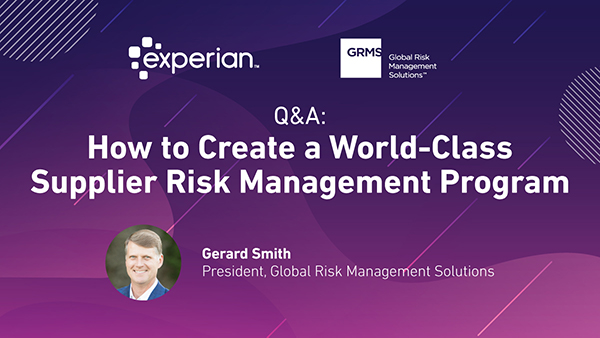
Supplier risk management has become a top priority for procurement and supply chain professionals. With rising regulatory and compliance fines and the global market disruptions caused by trade wars and the pandemic, a robust supplier risk management program is crucial. Gerard Smith, President and Co-founder of Global Risk Management Solutions, shares insights on creating a world-class supplier risk management program. In this interview, discover the essential components and strategies to effectively manage supplier risk and ensure compliance and stability in your supply chain. Evolution of Supplier Risk Management Practices Twenty years ago, when I was in procurement, many organizations self-performed everything. In other words, they collected documents and validated them as best as they could. The issue today is with COVID. With COVID, many companies are concerned. The two things we keep hearing about is the financial stability of the suppliers. Are they financially stable? Not only today, but in the foreseeable future, and secondarily, do they have insurance to protect the client company if there are any errors. So, it's the financials currently, and the insurance companies are most concerned about monitoring. Increasing Complexity in Supplier Risk Management Companies are starting to source globally, and more and more companies are concerned about the supply chain and if there are issues, whether geopolitical or whatever the case may be. So the idea here is to manage supplier risk proactively, and so there are three components of that. First, based on a client's requirements - the ability to do the risk assessment based on specific risk components. Second, having a help desk to try and troubleshoot where there are issues with the suppliers to help them to get into compliance. And third, most importantly, being able to monitor those suppliers for changes in status and getting actual push alerts, to be able to act on those. So, in other words, getting in front of the problem versus finding out that a supplier perhaps filed bankruptcy or showed up on a government watch list or something like that. Key Components of a World-Class Supplier Risk Management Program If a company wishes to have a world-class supplier risk management program, there are five crucial components that you would want to see, they are: Customized Risk Program A Customized Risk Program is tailored to address specific risk components relevant to a company's unique needs. This customization can take various forms: Geographical Considerations: Different regions, such as EMEA (Europe, Middle East, and Africa) and APAC (Asia-Pacific), have distinct regulatory requirements and market conditions. A Customized Risk Program can adapt to these regional differences, ensuring compliance and appropriate risk management practices in each area. Spending Levels: Companies often have both strategic and non-strategic suppliers. Strategic suppliers, with whom the company spends more, may require a more thorough and detailed risk assessment compared to non-strategic suppliers. Customizing the risk program based on spending levels ensures that critical suppliers are monitored more closely. Specific Risk Factors: Different industries and companies face unique risks. Whether it's financial stability, compliance with specific regulations, or reputational risks, a Customized Risk Program can focus on the most relevant risk factors for the company. The key objective of a Customized Risk Program is flexibility. It must be able to adapt to various factors such as geography, spending, and specific risk elements, ensuring it is not a one-size-fits-all solution but rather a bespoke approach to managing supplier risk effectively. Adjudicating Information This involves the critical process of verifying and clarifying data to ensure accuracy. This means systematically identifying and eliminating false positives, which occur when incorrect or irrelevant information is selected. For instance, if you input "Bob's Plumbing" into a database, you might receive numerous results for companies with similar names. The challenge is to determine which "Bob's Plumbing" is the correct one that your company works with. Adjudicating information requires sophisticated methods to accurately select the correct entity and cross-verify the details, ensuring that the data is precise and applicable to your specific supplier. This process is essential for maintaining the integrity and reliability of your supplier risk management program. Reporting In a supplier risk management program, reporting capability is vital for maintaining consistent and measurable compliance standards. This involves generating real-time, standardized reports that provide current risk ratings for all suppliers. With these reports, management can quickly identify which suppliers are in compliance with set standards and which are not, along with the reasons for non-compliance. Additionally, the reports highlight any ongoing issues within the supply chain, enabling management to address problems promptly. Effective reporting ensures transparency, accountability, and the ability to make informed decisions based on up-to-date risk assessments. Document Verification and Monitoring In a supplier risk management program, Document Verification and Monitoring is crucial for ensuring the authenticity and accuracy of the documents submitted by suppliers. While collecting and managing documents can be straightforward, the challenge lies in verifying their validity. Many procure-to-pay, source-to-pay, and ERP platforms face this issue, as they often rely on suppliers to upload documents without proper verification. This can result in the acceptance of invalid or even blank documents. To address this, a robust system or process must be in place to validate key documents such as certificates of insurance, W9 forms, and other critical documentation. This system should not only collect documents but also authenticate them, ensuring they meet the required standards and are current. Continuous monitoring of these documents is essential to maintain compliance and mitigate risks associated with outdated or fraudulent information. By implementing thorough document verification and monitoring, companies can ensure the integrity of their supplier risk management program. Continuous Monitoring Continuous Monitoring refers to the ongoing, real-time oversight of supplier activities and conditions to promptly identify and address potential risks. A primary focus of continuous monitoring is assessing the financial stability of suppliers. This means regularly evaluating their financial health to detect any signs of trouble. If a supplier shows indications of financial distress, such as declining financial metrics or negative market signals, the company can take proactive measures, such as halting purchase orders, to prevent potential disruptions in the supply chain. Continuous monitoring ensures that companies can swiftly respond to changes in a supplier's status, maintaining the reliability and integrity of their supply chain operations. Critical Risk Components for Effective Supplier Risk Management There are eight different risk categories. The risk components that companies should at least address within their program. Financial Stability Financial stability is monitoring financial stability in real-time and be able to identify if there are issues whether they are getting in worse financial shape or perhaps getting in better financial shape. Digital Insurance Verification The best practice right now is what's called digital insurance verification. We're able to manage insurance coverage electronically. We don't even have to collect a certificate of insurance anymore. We can do it digitally in North America. That means that we can monitor a supplier to ensure that they continue to have the insurance requirements daily, which is a unique situation. So you want to make sure, at a minimum, you collect the certificate of insurance. If you want the best practice, you do digital insurance verification. Reputational Protection We do global adverse media monitoring. So as an example, we manage over 25,000 media sources around the globe looking for negative stories because you want to know if your supplier is caught with child labor, or if they've closed a facility somewhere in the world that you're reliant upon. So adverse media is very big at this point because things are evolving very quickly. Regulatory Compliance Regulatory compliance is basically anything that's government regulation. So, it could be the various sanctions lists. Most people don't recognize there are over 1500 watch and sanctions lists around the globe including the U.S OFAC list. That's a big one. It can be a Conflict Minerals Declaration, U.K. Modern Slavery Act, Reach ROHS, the California Transparency Act, anything that's a government regulation falls into that category. Cyber Security Cyber Security would be anything that's involved with data and document verification. It has to be able to collect and validate not only the documents such as a code of conduct, but documents with an expiration date such as an NDA or a diversity certificate. Any standardized documents should be part of the program so suppliers don't get continuously contacted for more documents. Social Responsibility Social responsibility could be anything from diversity verification, child labor, those types of things. Document Management Validate key documents such as certificates of insurance, W9 forms, and other critical documentation. This system should not only collect documents but also authenticate them, ensuring they meet the required standards and are current. Continuous monitoring of these documents is essential to maintain compliance and mitigate risks associated with outdated or fraudulent information. Health and Safety Finally, health and safety could include an HSC questionnaire, EMR ratings, or OSHA statistics. Those are eight areas that companies should at least consider looking into as far as potential risk components. Obviously, there are different parts of each, one of those where those are the broad categories. Global Supplier Risk Assessments: Reliability and Challenges Dependingon what country we're speaking of. Is the information available? Yes, there are varying degrees of information. You can get more information in North American and EMEA than you can say in APAC or South America. Is it available? Absolutely. We can do a supply risk assessment in over 120 countries. So, it is possible to get information. There is standardized information in terms of the adverse media I spoke about. The watch and sanctions list, those are all global. There's a variety of things that can be managed globally. Some of it, in terms of the financial, for instance, it depends on which country we're talking about and how much information can be obtained within that country, and secondarily, whether it can be monitored on an ongoing basis. Again, it depends on which country we're speaking about. In summary Establishing a world-class supplier risk management program involves understanding the evolution of risk management practices, addressing increasing complexities, and incorporating critical components such as financial stability, digital insurance verification, and continuous monitoring. By proactively managing supplier risk, companies can safeguard their supply chain and ensure compliance. Want to go deeper? Watch our on-demand webinar with GRMS If you would like to hear more about GRMS, watch our on-demand webinar Mitigating Supplier Risk in A Changing World." Gerard goes into greater detail on best practices and how you can proactively manage supplier risk management while staying resilient and the new normal.
